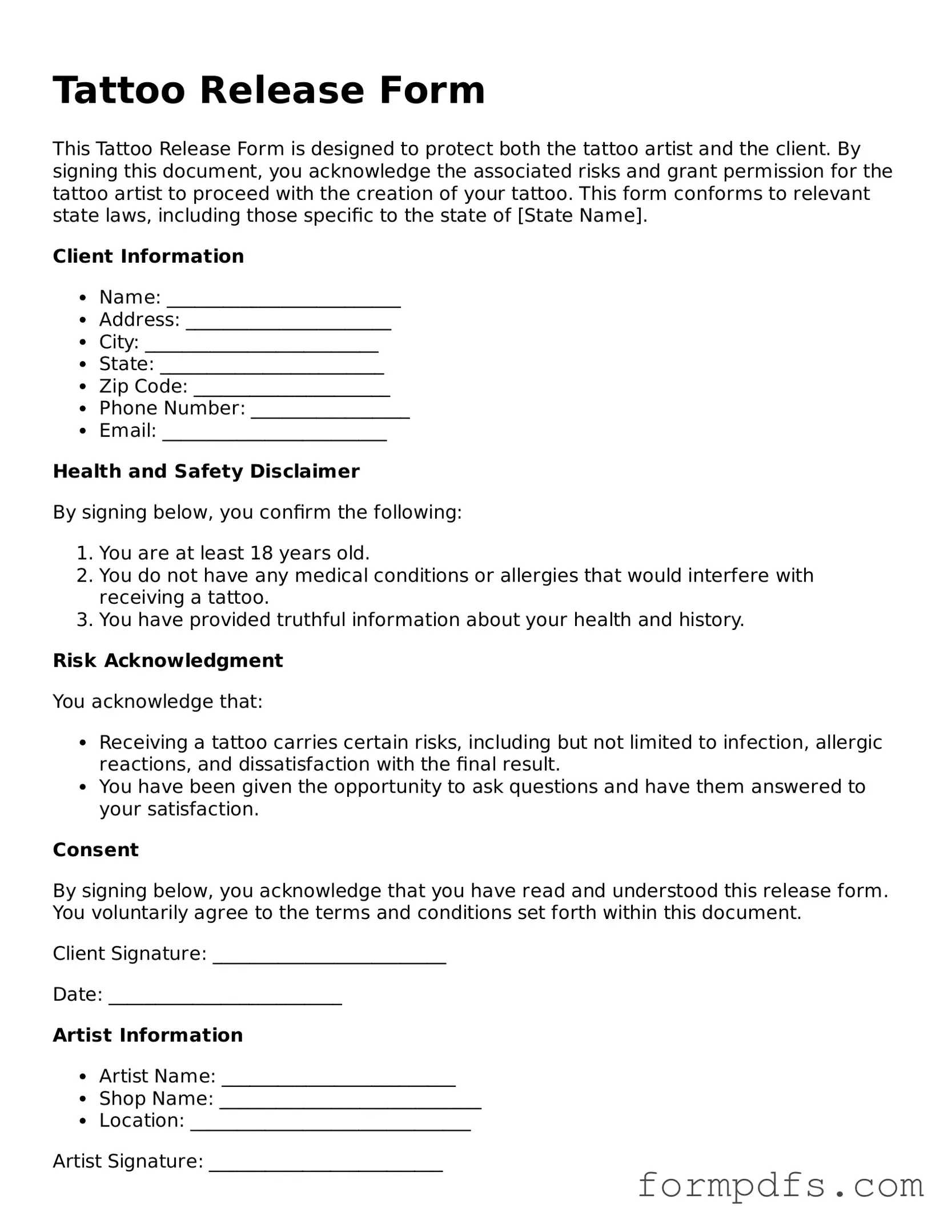What is a Tattoo Release form?
A Tattoo Release form is a legal document that allows individuals to grant permission for their tattoo to be photographed, reproduced, or used in various media. This form is often utilized by tattoo artists, studios, or companies that wish to use images of tattoos for promotional purposes, portfolios, or other commercial activities.
Why do I need to sign a Tattoo Release form?
Signing a Tattoo Release form protects both the artist and the individual with the tattoo. It ensures that the artist has the right to use images of the tattoo without facing legal issues. For the individual, it provides clarity about how their tattoo may be used and ensures they are aware of the implications of sharing their image.
What information is typically included in a Tattoo Release form?
A Tattoo Release form generally includes the name of the individual, the tattoo artist's name, a description of the tattoo, and the specific rights being granted. It may also outline how the images will be used, whether for social media, marketing, or other purposes. Additionally, it often includes a section for signatures and dates.
Can I revoke my permission after signing the form?
Once a Tattoo Release form is signed, it is legally binding. However, you can discuss your concerns with the tattoo artist or studio. While they may not be legally obligated to stop using the images, they may be willing to accommodate your request out of goodwill.
Is there any compensation involved when signing a Tattoo Release form?
Compensation is not always a requirement. Some artists may offer a form of payment or a discount on future services in exchange for the rights to use your tattoo images. However, this varies by artist and studio. Always clarify any compensation terms before signing the form.
What if I have multiple tattoos? Do I need a separate release for each one?
Typically, a single Tattoo Release form can cover multiple tattoos if they are all included in the document. However, it is essential to specify each tattoo clearly to avoid any confusion regarding which tattoos are covered under the release. If in doubt, consult with the artist.
Do I need a lawyer to review the Tattoo Release form?
While it is not mandatory to have a lawyer review the form, it can be beneficial, especially if you have concerns about how your tattoo will be used. Understanding your rights and the implications of the release can help you make an informed decision.
What happens if I do not sign the Tattoo Release form?
If you choose not to sign the Tattoo Release form, the artist or studio may not be able to use images of your tattoo for promotional or commercial purposes. This decision may also affect their ability to showcase their work in portfolios or on social media. It is essential to communicate your preferences clearly with the artist.
